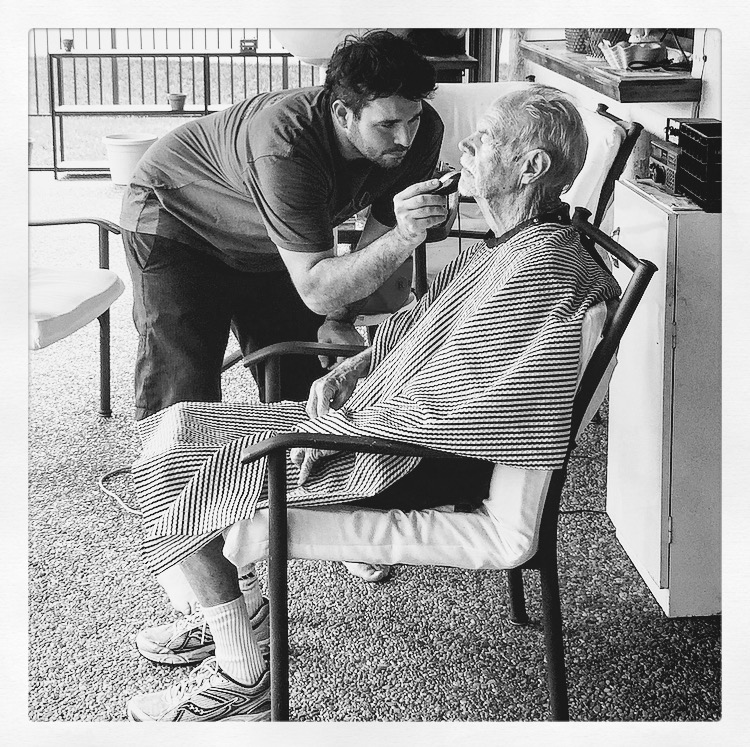Understanding Senior Isolation and Ways to Prevent It
Hey Ya’ll,
I might be moving forward with a life-after-caregiving but that doesn’t mean there aren’t still millions of folks navigating what remains a difficult journey. Luckily I have a new guest blogger to introduce you to today. Christian Worstell is a health and lifestyle writer living in Raleigh, NC and he is here with us to shed some light on the pains of senior isolation. He is a seasoned writer and has been doing freelance work for over 15 years and I am so grateful for his deep dive into this topic. As someone that lived in relative isolation as the result of caring for my parents through their illnesses, I can attest to the concerns facing those living a lifestyle of seclusion.
Seniors might be entering their “golden years,” but many in the elderly population find this golden time diminished by an overwhelming sense of isolation that can put their health, well being, and longevity at risk. The effects of this isolation can be avoided or reversed, but first, you must be able to detect the symptoms your loved one may be facing. This article outlines some of the causes, risks, and signs of senior isolation as well as some ways to prevent it from occurring.
What Is “Senior Isolation?”
Senior isolation occurs when an elderly individual becomes distanced from his or her interpersonal networks or groups. This can take the form of isolation that is psychological or physical, and it can leave seniors feeling as if they have lost their place in the community. The number of seniors that experience such feelings is substantial. In fact, a recent study revealed that nearly a third of respondents between 50 and 80 years old reported often feeling isolated or alone.
How Isolation Occurs
You might think that being a senior makes you more prone to social engagement, given the fact that many senior citizens have retired from full-time work and can take more time for activities with friends and families. Unfortunately, though, the reality is quite different. Senior citizens often face issues of reduced mobility as they age, which might limit their ability to get out and partake in the activities they once enjoyed. Their social circles also can begin to diminish; in addition to their friends succumbing to age, illness and death, many elderly adults also live at great distances from their extended families, which makes regular contact or social engagement more challenging. Some seniors have the advantage of a caregiver who might regularly attend to cooking or cleaning, but these caregivers are usually not equipped to be a full-time, live-in companion.
Risks of Isolation
The danger is that this isolation can reap a direct impact on a senior’s health. For example, the depression that can result from such isolation can contribute to an overall downturn in health, and the repercussions can be even more far-reaching. In fact, a recent study found that seniors who experienced isolation were more likely to experience longer periods of hospitalization and were also more likely to die sooner than those who did not report such feelings.
Signs of Isolation
Signs that your loved one might be suffering from isolation include:
A sudden lack of interest in activities a senior once loved
The emergence of new habits such as smoking or excessive drinking
Sullen, hostile, or reclusive behavior
Drastic weight loss
If you see such behaviors in your loved one, it is time that you explore some options to address their situation.
Prevention
Here is the good news: the impact of senior isolation can be easily reversed. You can help by simply engaging more with your loved one and encouraging them to do the things they love. Reversing or preventing the negative effects of isolation can be accomplished through a few simple steps:
Determine the Factors
Consider the main factors contributing to your senior’s sense of isolation and then seek means to address each of these factors. For example, if a senior is struggling to find a new place in his community, help them find groups, clubs, or activities that they might enjoy.
Make Your Loved One Feel Valuable
Find tasks or responsibilities your loved one can take on that make them feel they are valued and important.
Check-in
Perhaps the easiest of all, make a commitment to check in on your loved one frequently. This doesn’t have to mean a flight once a month across the country, but a standing phone call or note in the mail might provide your senior with the consistency and support to make them feel they are still vital to the larger world.
Awareness is the Beginning
With the ever-growing number of Baby Boomers entering their senior years, being aware of the issue of senior isolation has never been more prevalent. Recognizing the signs, however, and taking steps to seek solutions to such feelings of isolation can help keep those in their golden years going strong for many more to come.
If I can add a personal note to this post it’s the question of quality of life. After watching the struggles my parents faced while attempting to remain independent and at home, I can’t help but wonder why there is so much resistance when it comes to assisted living communities. The financial restraints are of course an important consideration, but if you have an affordable option in your area I would encourage you to investigate the possibility. The opportunity to participate in a social environment cannot be understated. It’s good for the mind and good for the soul. We all need connection in our lives so if you or a loved one are living alone as the years are winding down, don’t be afraid to explore a more communal environment. You might be pleasantly surprised for a healthy social adventure that’s still ahead.


